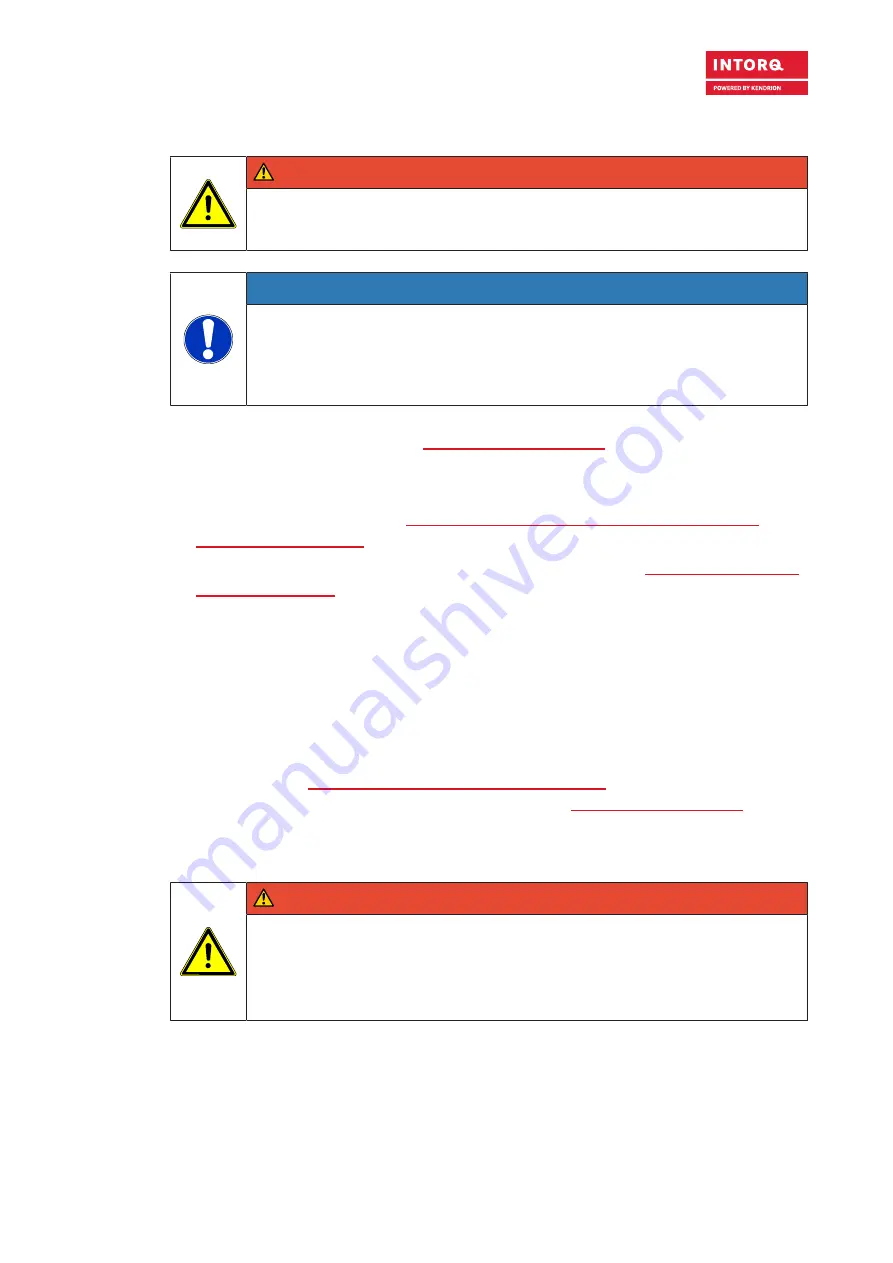
Maintenance and repair
Kendrion INTORQ | BA 14.0217 | 07/2021
74
9.3.4
Adjusting the air gap
DANGER
Danger: rotating parts!
The brake must be free of residual torque.
NOTICE
Please observe when mounting the flange design with additional screws:
Clearing holes for the screws in the end shield must be behind the threaded screw holes
in the flange. Without the clearing holes, the minimal rotor thickness cannot be used. The
screws must not press against the end shield.
1. Loosen the screws (refer to the figure Adjusting the air gap, Page 46 ).
2. Screw the sleeve bolts (using an open-end wrench) further into the stator. A 1/6 turn will decrease the
air gap by approximately 0.15 mm.
3. Tighten the screws. (Refer to table Characteristics: screw kit for brake assembly on separately
screwed-on flange, Page 24 for the torque values.)
4. Check the value of s
L
near the screws using a feeler gauge. (Refer to table Characteristics for air gap
9.3.5
Checking the rotor thickness
1. Pull the rotor off the hub.
2. Check for possible damage (e.g. chipping in the friction lining or worn gear teeth).
3. Measure the rotor thickness using a caliper gauge at three different points on the rotor's circumfer-
ence.
4. Compare the measured rotor thickness with the minimum permissible rotor thickness. (Refer to the
values in the table Characteristics for air gap specifications, Page 23.) If the measured rotor thickness
is insufficient, the rotor must be replaced completely. (Refer to Replacing the rotor, Page 74 for the
description.)
9.3.6
Replacing the rotor
DANGER
Danger: rotating parts!
Switch off the voltage. The brake must be free of residual torque.
Your system should be mechanically immobilized in the event that it could start moving
when the brake is released.
1. Remove the connection cables.
2. Loosen the screws evenly and then remove them.
3. Pay attention to the connection cable during this step! Remove the complete stator from the end
shield.






















